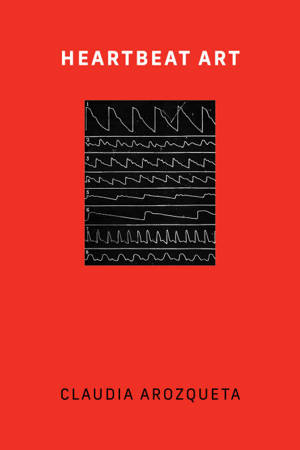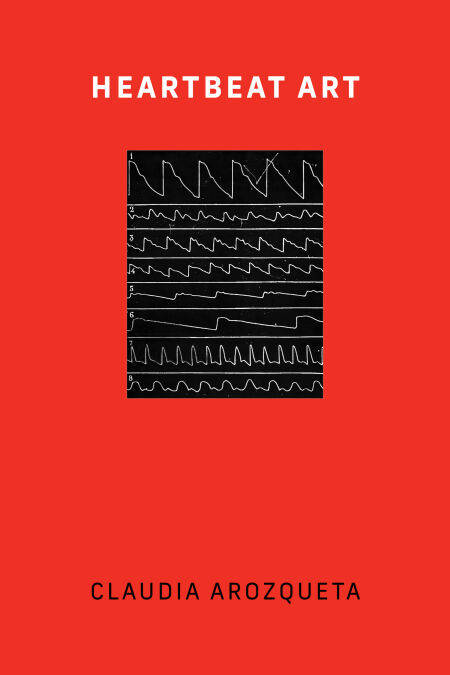
- Afhalen na 1 uur in een winkel met voorraad
- Gratis thuislevering in België vanaf € 30
- Ruim aanbod met 7 miljoen producten
- Afhalen na 1 uur in een winkel met voorraad
- Gratis thuislevering in België vanaf € 30
- Ruim aanbod met 7 miljoen producten
Zoeken
Omschrijving
An innovative history of heartbeats, pulse, and technoscience in the works of a wide international array of artists and composers.
Heartbeat Art is the first study of how artists have engaged with heartbeats from the 1960s to the present, creating sophisticated and technological works that project in unique ways the circulatory processes of the body beyond its physical limits. Drawing on a long history of scientific and artistic experimentation, Claudia Arozqueta offers detailed case studies of heartbeat works by a wide range of international artists working at the interconnections of our bodies, art, and science and technology, including Yoko Ono, Pauline Oliveros, Heinz Mack, Brian O’Doherty, Teresa Burga, and many others.
Technoscientific advances in monitoring heartbeats and pulses in the nineteenth century—such as René Laennec’s stethoscope, Étienne-Jules Marey’s sphygmograph and chronophotograph, and Willem Einthoven’s electrocardiograph—transformed the movements of the heart into audible and visual representations. Artists saw in the language of these scientific technologies a way of mingling the inner with the outer, the physical with the technological, and data with flesh. Using archival research, interviews, and correspondence, Arozqueta describes significant works in detail, discusses their contexts and development, and examines the larger classes and contours of this neglected area of artistic activity. Other artists in the volume include Éliane Radigue, Jean Dupuy, Linda Montano, Catherine Richards, Diana Domingues, Mona Hatoum, Rafael Lozano-Hemmer, and Christian Boltanski.
Heartbeat Art is the first study of how artists have engaged with heartbeats from the 1960s to the present, creating sophisticated and technological works that project in unique ways the circulatory processes of the body beyond its physical limits. Drawing on a long history of scientific and artistic experimentation, Claudia Arozqueta offers detailed case studies of heartbeat works by a wide range of international artists working at the interconnections of our bodies, art, and science and technology, including Yoko Ono, Pauline Oliveros, Heinz Mack, Brian O’Doherty, Teresa Burga, and many others.
Technoscientific advances in monitoring heartbeats and pulses in the nineteenth century—such as René Laennec’s stethoscope, Étienne-Jules Marey’s sphygmograph and chronophotograph, and Willem Einthoven’s electrocardiograph—transformed the movements of the heart into audible and visual representations. Artists saw in the language of these scientific technologies a way of mingling the inner with the outer, the physical with the technological, and data with flesh. Using archival research, interviews, and correspondence, Arozqueta describes significant works in detail, discusses their contexts and development, and examines the larger classes and contours of this neglected area of artistic activity. Other artists in the volume include Éliane Radigue, Jean Dupuy, Linda Montano, Catherine Richards, Diana Domingues, Mona Hatoum, Rafael Lozano-Hemmer, and Christian Boltanski.
Specificaties
Betrokkenen
- Auteur(s):
- Uitgeverij:
Inhoud
- Aantal bladzijden:
- 298
- Taal:
- Engels
- Reeks:
Eigenschappen
- Productcode (EAN):
- 9780262382618
- Verschijningsdatum:
- 26/05/2025
- Uitvoering:
- E-book
- Beveiligd met:
- Adobe DRM
- Formaat:
- ePub

Alleen bij Standaard Boekhandel
+ 39 punten op je klantenkaart van Standaard Boekhandel
Beoordelingen
We publiceren alleen reviews die voldoen aan de voorwaarden voor reviews. Bekijk onze voorwaarden voor reviews.








